Shakespeare’s theatre influenced modern playwriting by introducing more dynamic, multi-layered stories. His blend of tragedy, comedy, and history paved the way for modern playwrights to experiment with genres and narratives. His ability to create complex characters and compelling dialogues is a hallmark of contemporary theatre and film.
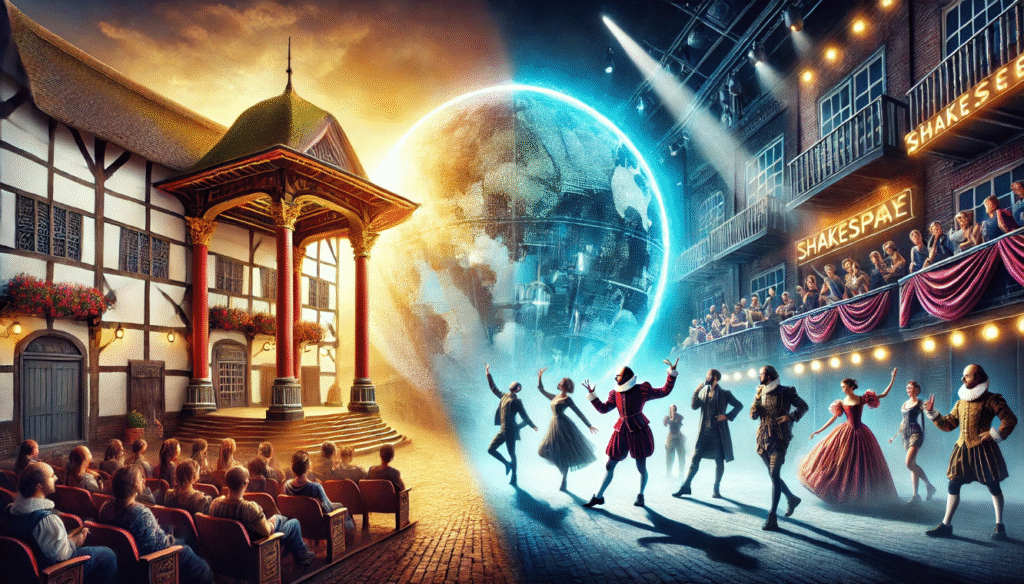
Understanding the Evolution of Theatre During Shakespeare's Era: How It Shaped Modern Drama and Performance
Have you ever wondered how theatre evolved from simple morality plays to the dynamic performances we enjoy today? The evolution of theatre during Shakespeare’s era is one of the most fascinating and pivotal transformations in the history of drama. Shakespeare’s time marked a radical shift in how stories were told on stage—introducing complex characters, intricate plots, and a deeper connection with the audience. This period didn’t just shape the plays of his time; it laid the groundwork for modern drama and performance as we know it.
In this article, we’ll explore how the evolution of theatre during Shakespeare’s era changed the way we view storytelling, acting, and stagecraft. Whether you’re an aspiring actor, playwright, or simply a theatre enthusiast, understanding this transformation is key to appreciating how Shakespeare’s legacy continues to influence modern theatre today. Ready to dive into the heart of one of history’s greatest cultural revolutions? Let’s uncover how Shakespeare forever changed the world of theatre!
Table of Contents
Toggle1.The Birth of a Theatre Revolution 
Shakespeare’s era wasn’t just a time of incredible plays—it was the birth of a theatre revolution. Before this period, theatre was often reserved for the elite or was performed in church settings with simple moral lessons. The focus was on basic storytelling, often with religious themes or social commentary. But Shakespeare changed all that, making theatre a cultural experience accessible to everyone, regardless of social class.
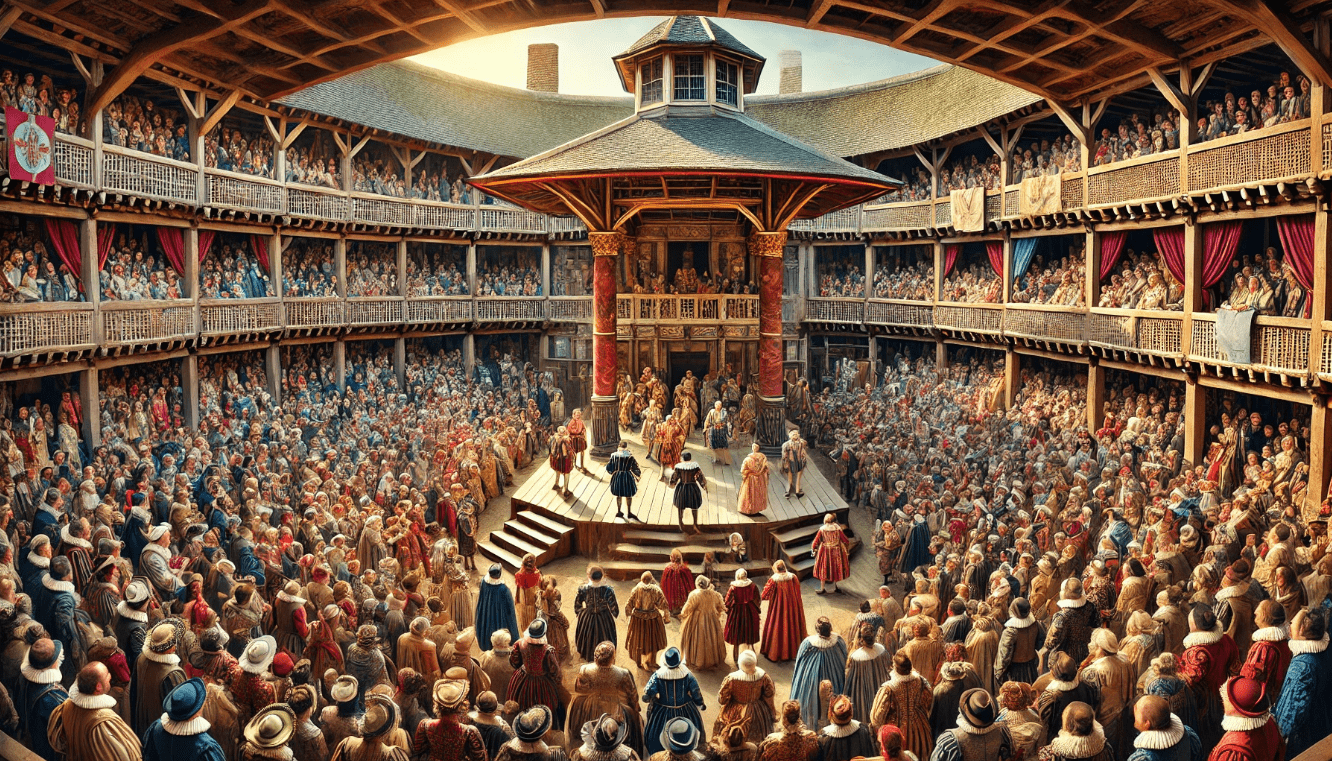
Theatre Becomes Public and Accessible
One of the most significant shifts during Shakespeare’s time was the rise of public playhouses. Before this, performances were either held in private homes or churchyards, limiting their reach. Shakespeare’s plays, performed in iconic venues like the Globe Theatre, were open to the masses. This new form of accessibility meant that theatre was no longer just for the rich or the clergy—it was for everyone.
Public theatres allowed for larger audiences, and for the first time, a wide spectrum of society could come together to witness and enjoy the same performance. Shakespeare capitalized on this shift, writing plays that appealed to both the nobility and the common folk. His plays were rich with complex characters, humor, and universal themes that resonated with all classes.
The Introduction of Complex Characters and Stories
Shakespeare didn’t just change where theatre was performed; he revolutionized the content itself. Before Shakespeare, plays often focused on simple plots or religious narratives. Shakespeare introduced multi-dimensional characters, intricate plots, and deep psychological exploration. His works tackled themes like love, betrayal, ambition, and the human condition—topics that continue to resonate today.
Innovative Staging and Performance Techniques
Shakespeare also brought innovative stagecraft to life. The Globe Theatre, where many of his plays were performed, was designed with minimal props but relied heavily on the skill of the actors and the imagination of the audience. The sparse set design encouraged creativity, and the actors’ ability to portray emotion and action was key. The use of soliloquies and breaking the fourth wall were techniques that kept audiences engaged, drawing them deeper into the story.
A Lasting Legacy in Modern Theatre
Shakespeare’s era was the spark that ignited the evolution of theatre into what it is today. It wasn’t just the stories or the acting—it was the experience of theatre itself. Modern performances, whether on stage or in film, still echo the techniques and innovations Shakespeare brought to life. From compelling characters to inclusive storytelling, the foundation of modern theatre was built during this transformative time.
2.The Context of Theatre Before Shakespeare: A Snapshot of Early Performance 
Before Shakespeare revolutionized the stage, theatre looked very different. The foundations of Western theatre were built on traditions that were simple, often focused on moral lessons, and sometimes restricted to specific groups. To understand how Shakespeare’s works broke from tradition, we need to first explore what theatre was like before his time.
Ancient Theatre: The Roots of Drama
The origins of Western theatre trace back to ancient Greece. Early plays were performed during religious festivals, primarily honoring gods like Dionysus. These performances were highly ritualistic, with actors wearing masks and performing in large amphitheaters. Greek plays often dealt with mythological stories, focusing on themes like fate, justice, and the gods’ influence on human lives.
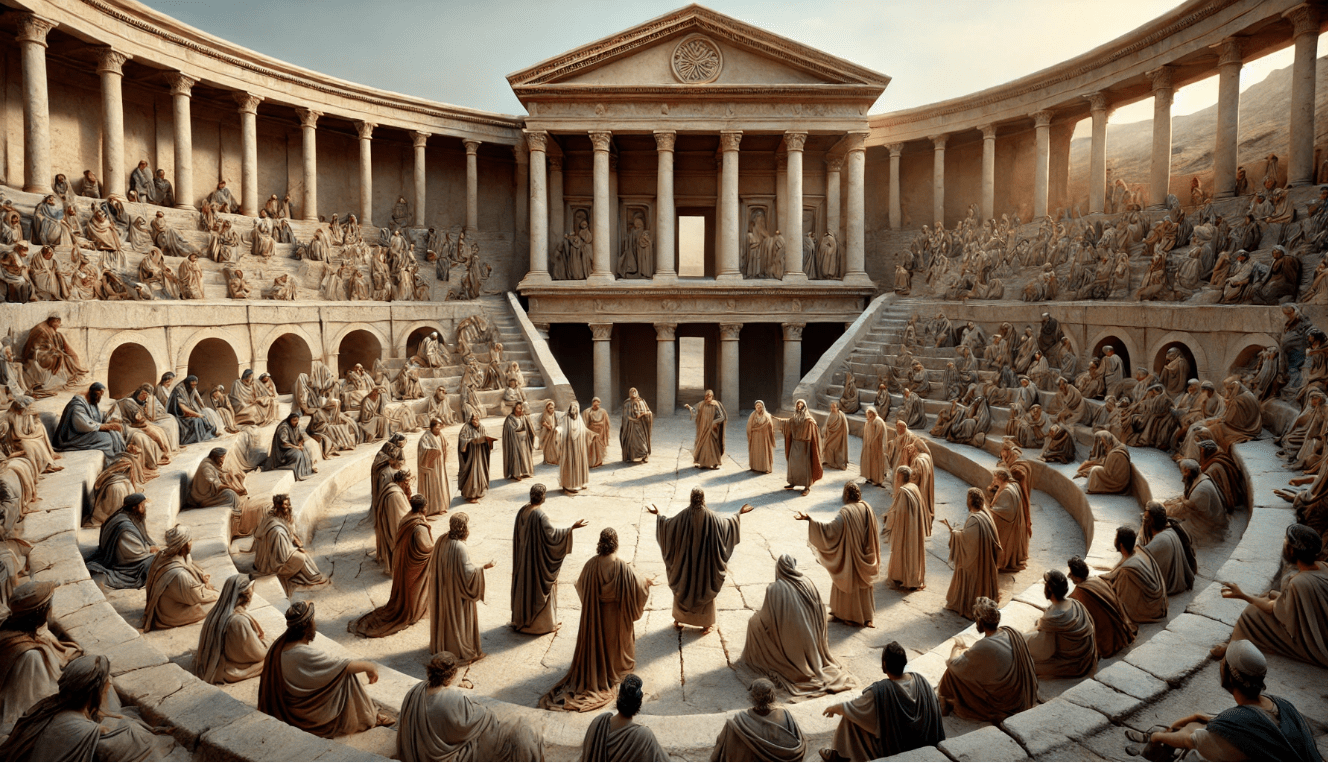
In ancient Rome, the emphasis shifted more towards entertainment. Roman theatre was influenced by Greek traditions but included more spectacle, such as gladiatorial contests and lavish stage effects. However, the storytelling remained relatively straightforward, focusing on humor, political satire, and historical events.
Medieval and Early Renaissance Theatre: A Moralistic Approach
After the fall of Rome, theatre in Europe took a step back in complexity. During the medieval period, plays were often performed by religious institutions. These plays, called mystery or miracle plays, were centered around Biblical stories and moral lessons. Their goal was to teach audiences about virtue and salvation, making them both educational and spiritual.
At this time, most plays were performed in churches or town squares. The performances were often simple and focused on delivering a message rather than exploring complex characters or stories. Stage design was minimal, and the acting was often exaggerated to reach the audience. While these plays were important for religious instruction, they lacked the dramatic depth that would emerge later.
The Rise of Early Renaissance Theatre
The Renaissance period (14th to 17th century) sparked a renewed interest in classical literature and humanism. During this time, theatre began to evolve into something more sophisticated. In Italy, the introduction of commedia dell’arte brought improvised performances and stock characters, which influenced comedic acting styles throughout Europe.
In England, plays were still performed in courtyards, inns, and royal courts, with performances often focusing on historical figures or folk tales. These plays began to feature more complex stories, but they were still limited by conventions of morality and social hierarchy.
The Shift Toward Public Theatres
By the late 16th century, England’s public theatre scene was evolving. The rise of playhouses like The Rose and The Swan started to shift theatre from the confines of religious or courtly settings to more public, secular spaces. These theatres attracted a broader audience, from noblemen to common folk. However, these plays still adhered to many traditional structures, and the roles of women were either nonexistent (as all roles were performed by men) or limited to specific characters.
This pre-Shakespearean theatre lacked the psychological depth, complexity, and inclusive storytelling that Shakespeare would later introduce. It was mostly straightforward, often moralistic, and focused on entertaining audiences with spectacle, humor, and sometimes simple plots.
Key Takeaways:
- Early theatre was heavily influenced by religion, with performances aimed at educating or moralizing rather than purely entertaining.
- Ancient Greek and Roman theatre focused on mythological themes, with simple storytelling and spectacle.
- Medieval theatre was rooted in religious plays, often performed in churches, with minimal focus on character development.
- Renaissance theatre started to embrace more complex stories, but it was still in its infancy compared to what Shakespeare would soon create.
Before Shakespeare’s era, theatre was beginning to move toward more elaborate forms of entertainment, but it hadn’t yet reached the complexity and emotional depth that would define modern drama. This shift, which began in public theatres and was propelled by the works of Shakespeare, would soon take drama into a new era—one that would captivate audiences for centuries to come.
3.The Rise of Public Theatres: The Influence of Playhouses 
One of the most pivotal moments in the evolution of theatre during Shakespeare’s era was the rise of public playhouses. These public venues fundamentally shifted how theatre was experienced, making it more accessible, diverse, and vibrant than ever before. Let’s explore how these playhouses influenced the development of modern theatre.
Opening the Stage to Everyone: A New Era of Accessibility
Before the public playhouses, theatre was mostly confined to private or religious spaces. It was often a luxury reserved for the wealthy or for religious instruction. However, with the rise of public theatres in the late 16th century, theatre became a shared experience for people of all social classes—rich, poor, and everything in between.
Public playhouses like The Globe Theatre, The Rose, and The Swan were designed to accommodate large audiences, making theatre an entertainment option for all. The Globe, for example, could hold up to 3,000 people. The architecture was designed to bring the audience closer to the performance, creating a more immersive and interactive experience. For the first time, a play was not just a performance for the elite—it was for everyone.
Theatres as Cultural Hubs: A Meeting Place for Society
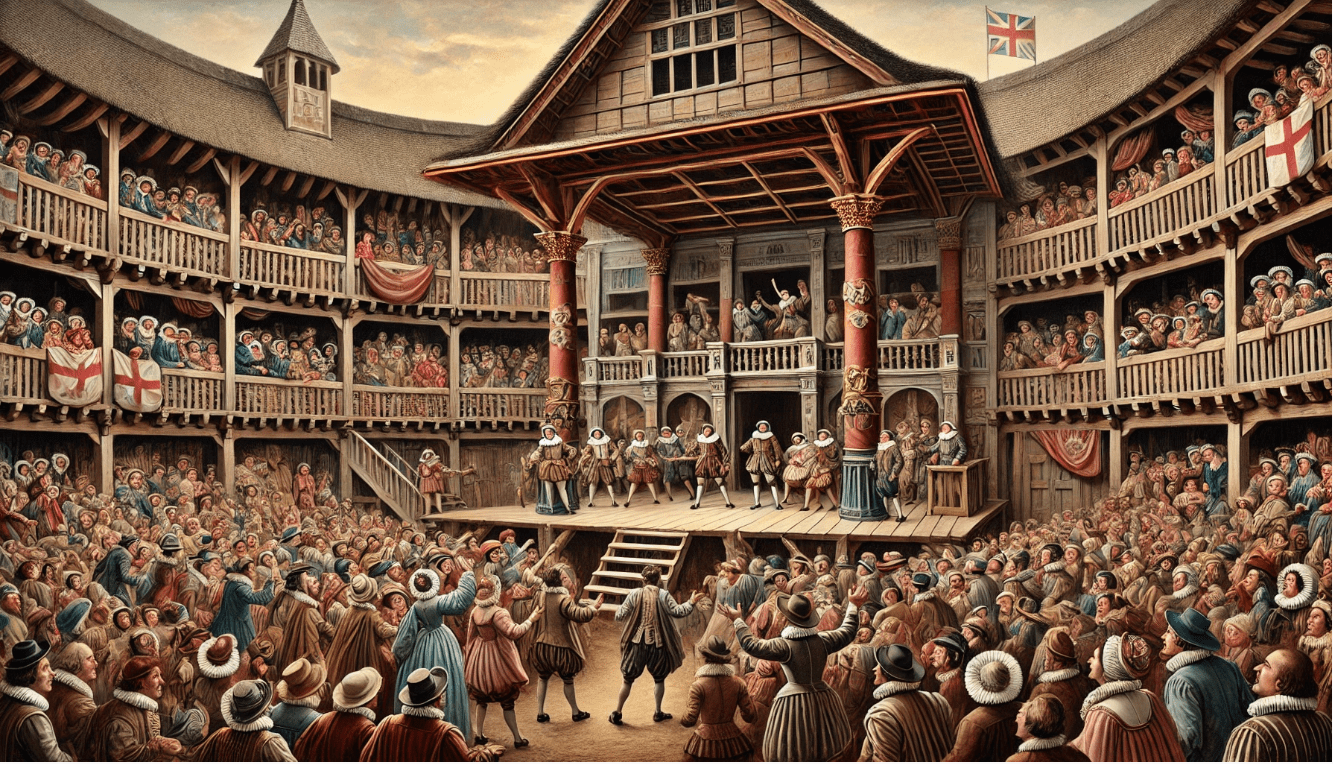
These public theatres became cultural hubs in London, attracting a diverse crowd. The combination of standing “groundlings” (the poorer, standing audience members) and seated nobility created an exciting dynamic. The interaction between actors and the audience, from heckling to cheers, influenced the energy of performances. This communal aspect of theatre is something we still see today in modern performances, where audience reaction often shapes the energy of the show.
Theatres like The Globe also served as important social spaces, bringing together people from different walks of life. Shakespeare’s plays were crafted to entertain this wide range of audiences, with jokes and references that would resonate with both the elite and commoners. This shift allowed theatre to thrive as a popular, inclusive form of entertainment.
Changing the Way Plays Were Written: More Dynamic Stories
The rise of public playhouses also had a profound impact on the types of plays that were written. Unlike earlier theatre, which had been dominated by religious themes or simple morality plays, public theatres demanded more complex, engaging stories that would captivate a larger and more diverse audience. Shakespeare, along with other playwrights of the time, adapted to this shift by creating plays that combined different genres—tragedies, comedies, histories—and characters that were more relatable and multi-dimensional.
Shakespeare’s genius lay in his ability to write for the specific demands of public theatres. He understood that his audience wanted to see not just royal figures but also common people, soldiers, merchants, and clowns. His characters were more human, with flaws, desires, and depth, which is a stark contrast to the more one-dimensional characters seen in earlier plays.
The Impact on Stage Design and Performance Style
Public theatres also brought innovations in stage design and performance style. The stages were open-air, and minimal sets were used, allowing actors to rely on their skills to convey the story. While there were no elaborate backdrops, the use of props, costumes, and the actors’ performances created an atmosphere that transported the audience into different worlds.
In terms of performance style, actors had to adapt to larger, more diverse audiences. The vocal delivery and gestures were more pronounced to ensure that people in the back could hear and see the action. This meant that actors were not just storytellers; they were performers who had to connect with the audience on a deeper level. This marked the beginning of a more expressive and dynamic style of acting that would influence future generations.
4. Shakespeare’s Contribution to Theatre: Innovation and Mastery 
William Shakespeare didn’t just write plays—he transformed theatre. His contributions to drama, stagecraft, and storytelling were so groundbreaking that they continue to influence theatre today. In this section, we’ll explore how Shakespeare’s innovations not only elevated his era but also reshaped the future of drama and performance.
Innovative Storytelling: Complex Characters and Universal Themes
Before Shakespeare, plays often focused on straightforward plots or religious morality. Shakespeare, however, introduced characters who were complex, multi-dimensional, and human. His characters, whether kings, jesters, or lovers, were driven by their emotions, desires, and flaws. This deep character development was a game-changer in the way stories were told on stage.
Shakespeare’s ability to craft relatable characters, from the tragic Hamlet to the comedic Puck, set the stage for the rich character-driven drama we see in modern theatre. His works explored universal themes—love, betrayal, ambition, and fate—topics that resonate with audiences of all ages, backgrounds, and cultures.
Mastery of Language: Elevating the Power of Words
Shakespeare’s use of language is legendary. His writing was poetic, but it was also deeply impactful. He introduced iambic pentameter (a rhythmic pattern of syllables) to elevate the emotional intensity of dialogue. He could capture complex emotions in a single line, turning ordinary speech into something extraordinary. Phrases like “To be, or not to be” from Hamlet and “All the world’s a stage” from As You Like It are still quoted today, showcasing his unrivaled mastery of language.
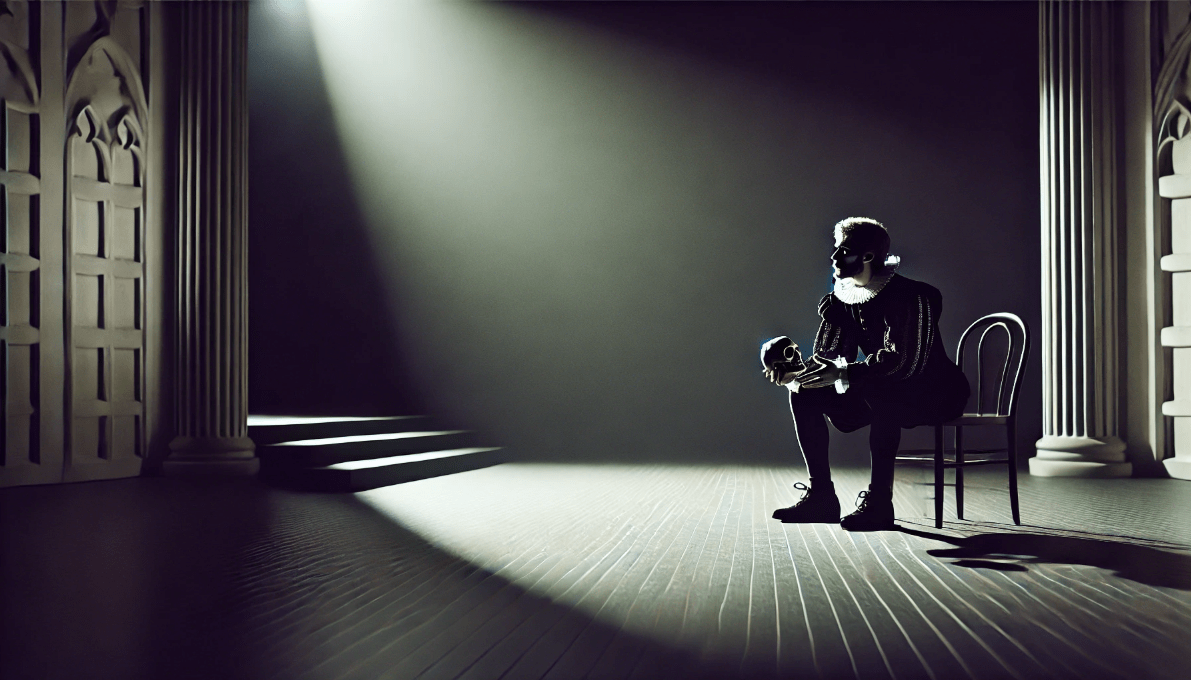
Shakespeare also enriched the English language by coining new words and phrases—many of which are still in use today. His ability to bend and play with language gave actors and directors more tools to express deeper emotions, creating more vivid and powerful performances.
Blending Genres: Tragedy, Comedy, and History
One of Shakespeare’s most innovative contributions was his ability to blend different genres within his works. He didn’t stick to just one type of play; he mixed elements of comedy, tragedy, and history to create unique, dynamic performances.
- Tragedy: Shakespeare’s tragedies like Macbeth, Othello, and King Lear show how human flaws can lead to inevitable downfall. These plays explored the darker side of human nature and set the stage for modern psychological drama.
- Comedy: His comedies, like A Midsummer Night’s Dream and Twelfth Night, showcased a lighter, more humorous side of life, often with mistaken identities, love triangles, and witty dialogue.
- History: Shakespeare’s historical plays, such as Henry V and Richard III, explored national identity, politics, and the power struggles that shaped history.
By weaving these genres together, Shakespeare created plays that could entertain, provoke thought, and spark discussion—attributes that are still essential in modern theatre and film.
Innovative Stagecraft: Breaking New Ground in Performance
Shakespeare didn’t just innovate through his writing; he also contributed to the physical performance of theatre. The design of the Globe Theatre, for example, encouraged audience interaction. The actors performed on a thrust stage that brought them closer to the audience, making the theatre experience more immersive. The lack of elaborate sets and the focus on actors’ performances allowed the imagination of the audience to fill in the gaps, creating a shared experience between the performers and the spectators.
In terms of performance style, Shakespeare’s use of soliloquies (long speeches by characters that reveal their inner thoughts) became a hallmark of his work. These speeches provided deeper insight into characters’ minds, allowing the audience to connect with them on a more personal level.
Shakespeare’s Lasting Legacy in Modern Theatre
Shakespeare’s innovations laid the groundwork for modern theatre in countless ways. His exploration of complex characters, his blending of genres, and his mastery of language all shaped the direction of drama. Today, his influence is evident in nearly every stage production—from the deep emotional work of actors to the storytelling techniques that still dominate modern theatre and film.
Shakespeare’s works continue to be adapted, reinterpreted, and performed around the world. The themes, characters, and styles he introduced remain as relevant today as they were during his time.
5. Key Elements of Shakespearean Theatre: What Made It Unique 
Shakespearean theatre wasn’t just about the plays themselves—it was the way the plays were brought to life that made them so unique. From the actors to the stage design, every element contributed to a powerful, immersive experience that still influences theatre today. Let’s break down the key elements that made Shakespeare’s theatre stand out.
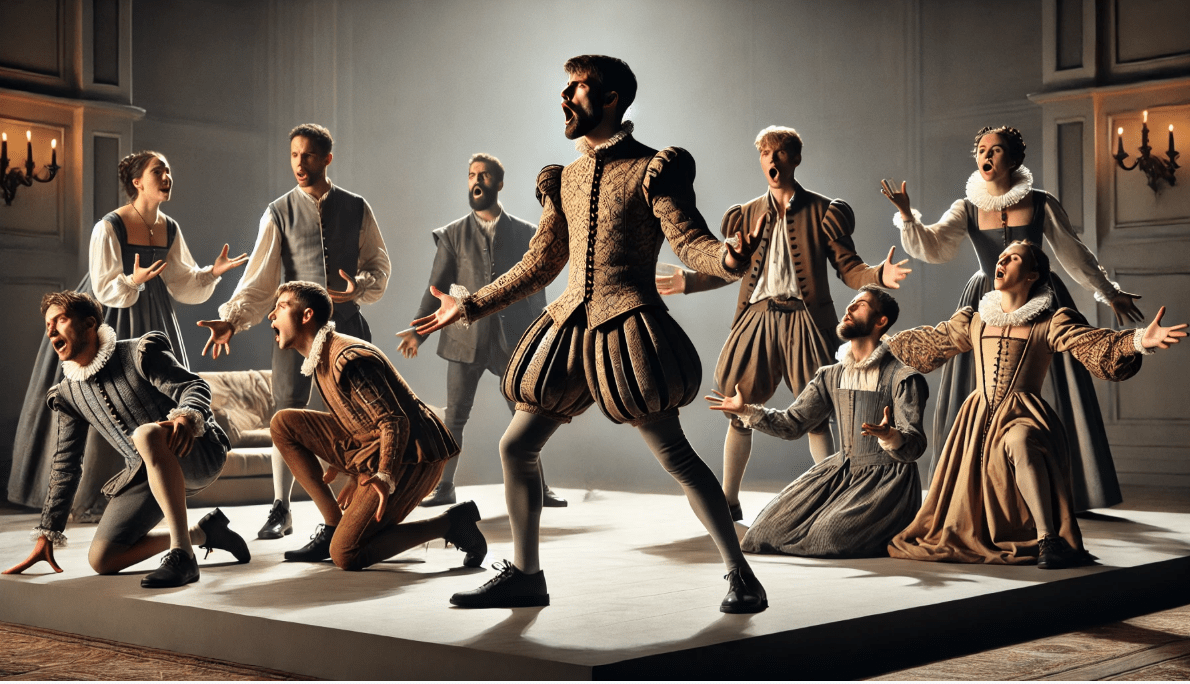
1. The Role of Actors and Acting Companies
In Shakespeare’s time, acting companies were at the heart of theatre. These companies, such as the Lord Chamberlain’s Men (which Shakespeare was a part of), were composed of a mix of experienced actors and rising stars.
- Ensemble acting: Shakespeare’s plays required a strong ensemble cast, where each actor played a vital role in bringing the story to life. Even minor roles were integral to the performance, adding depth to the plot.
- Lead actors: Famous actors like Richard Burbage became icons of the stage, playing key roles in many of Shakespeare’s greatest plays. Their ability to portray complex characters was a crucial element in the success of the performances.
Actors also played multiple roles, often switching between them in a single performance, which demanded great versatility and skill. This multitasking approach in the acting company made the performances feel dynamic and alive.
2. Minimalist Stage Design: Creativity Through Simplicity
One of the defining features of Shakespearean theatre was its minimalist approach to stage design. The Globe Theatre, where many of Shakespeare’s plays were performed, had a simple stage with little scenery. Instead of relying on elaborate sets, the actors and their performances took center stage.
- Imagination over props: With minimal props, Shakespeare relied on the audience’s imagination to visualize different settings and environments. For instance, the word “forest” in A Midsummer Night’s Dream would transport the audience to the woods without needing to physically build one.
- Symbolic use of costumes: Costumes in Shakespeare’s theatre were symbolic and helped define the characters. The rich costumes worn by royalty contrasted with the simpler clothing of commoners, visually signaling their status and roles in the story.
3. Use of Language and Poetry
Shakespeare’s use of language was unlike anything that had come before. His writing wasn’t just about dialogue; it was about creating an emotional and intellectual connection with the audience through carefully crafted verse and prose.
- Iambic Pentameter: The most famous feature of Shakespeare’s language is his use of iambic pentameter—a rhythmic pattern that mimics the natural flow of speech. This made his dialogue feel both formal and fluid, helping to convey emotions and thoughts with elegance.
- Soliloquies: These long, introspective speeches allowed characters to express their inner thoughts and feelings directly to the audience. Iconic soliloquies, like Hamlet’s “To be, or not to be,” let audiences peer into the soul of the character, creating a deep emotional connection.
Shakespeare’s mastery of language gave his characters depth and allowed actors to explore a wide range of emotions, making his works rich and versatile for both performance and interpretation.
4. The Interaction Between Actors and the Audience
One of the most distinctive aspects of Shakespearean theatre was the relationship between the actors and the audience. The open-air playhouses, like The Globe, were designed to encourage interaction.
- The groundlings: These were the audience members who stood in the pit, directly in front of the stage. They were often rowdy, vocal, and not afraid to show their approval or disapproval. This created a dynamic, interactive atmosphere that made the performances feel immediate and alive.
- Breaking the Fourth Wall: Shakespeare’s plays often involved actors speaking directly to the audience, breaking the fourth wall and making them feel like part of the action. This connection helped to draw the audience into the play’s world.
5. The Use of Music and Sound Effects
Music played an important role in enhancing the emotional impact of a performance. Though it wasn’t as prominent as in modern musicals, Shakespearean theatre used music strategically to set the mood and tone of scenes.
- Sound effects: Simple sound effects, like drum beats or horns, would often be used to signal a shift in tone or mark a dramatic event (e.g., a battle or a storm). These added layers to the emotional experience, even with limited technology.
6. The Impact of Shakespeare’s Theatre on Modern Drama 
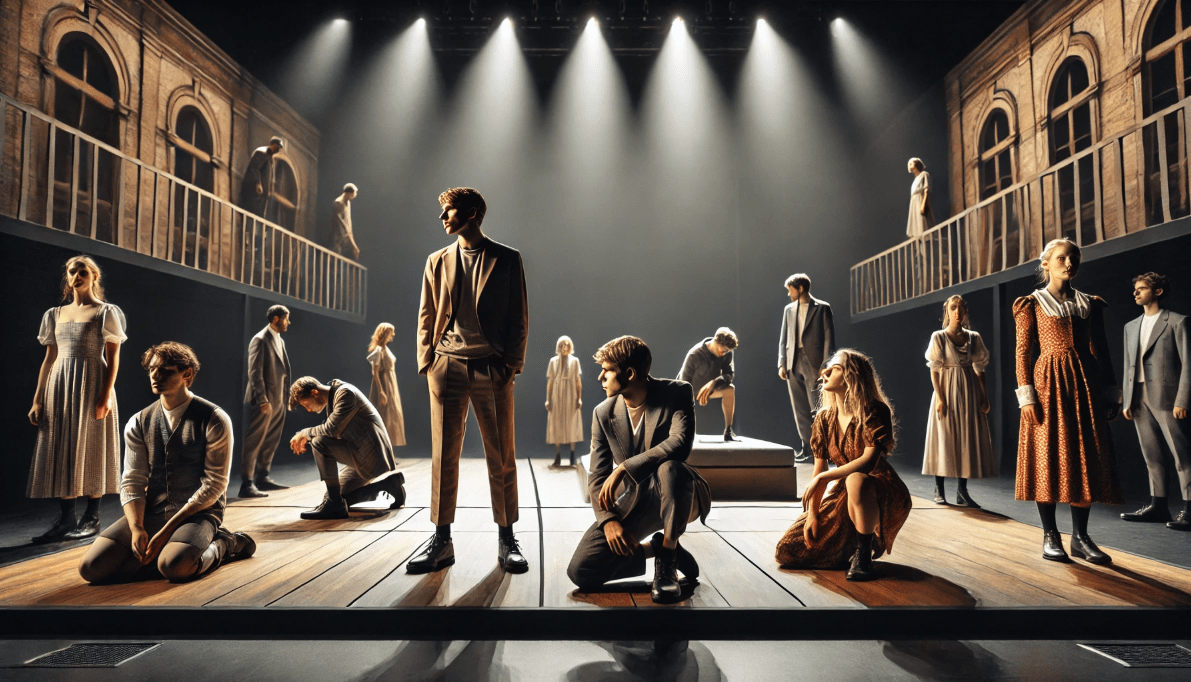
Shakespeare didn’t just change theatre in his time—his influence still resonates in modern drama today. From the structure of plays to the depth of characters, Shakespeare’s innovations continue to shape how stories are told on stage and screen. Let’s explore how his theatre has left a lasting legacy in the world of modern drama.
1. Complex Characters and Psychological Depth
One of Shakespeare’s most significant contributions to modern drama is his development of complex, multi-dimensional characters. Before Shakespeare, characters in plays were often one-dimensional, serving as mere vessels for a moral lesson or a simple plot point.
Shakespeare, however, introduced characters with inner conflicts, contradictions, and emotional depth. Think of Hamlet, whose introspective soliloquies explore the struggles of existence, or Lady Macbeth, who navigates a whirlwind of ambition, guilt, and insanity. These nuanced characters have become the blueprint for the complex protagonists and antagonists we see in modern drama and film.
In contemporary plays and movies, characters with emotional depth and internal struggles are the norm, thanks to Shakespeare’s pioneering work in creating psychological complexity.
2. Use of Themes That Resonate Across Time
Shakespeare’s plays are timeless because they address universal themes—love, power, revenge, betrayal, and fate—that continue to resonate with audiences today. These themes are as relevant now as they were in the 16th century, and modern playwrights often draw inspiration from Shakespeare’s ability to tackle deep, thought-provoking issues.
For example, Shakespeare’s tragedies, like Macbeth and Othello, explore the destructive nature of ambition and jealousy. These themes appear again and again in modern stories, whether in contemporary plays, films, or TV shows. By focusing on fundamental human emotions and experiences, Shakespeare’s work continues to influence how we tell stories in modern drama.
3. The Evolution of Play Structure and Genre
Shakespeare’s innovation wasn’t just in character development—it was also in how plays were structured. Before Shakespeare, plays were often predictable, adhering to rigid conventions. Shakespeare, however, broke these rules and experimented with different structures, blending tragedy, comedy, and history in a single play. His willingness to mix genres paved the way for modern playwrights to create more flexible, layered narratives.
Modern drama often combines elements from multiple genres. A contemporary play or film might mix comedy with tragedy, or science fiction with romance, much like Shakespeare did with works like A Midsummer Night’s Dream (comedy and fantasy) or King Lear (tragedy with dark humor).
4. Breaking the Fourth Wall and Audience Engagement
Another key influence Shakespeare had on modern drama was his innovative use of the “fourth wall.” In his plays, characters often speak directly to the audience, breaking the illusion of the world on stage. This technique, which can be seen in Hamlet’s soliloquies or the interactions with the groundlings, invites the audience into the world of the play, creating a deeper connection between them and the story.
In modern theatre, the technique of breaking the fourth wall is still widely used. From The Rocky Horror Picture Show to more experimental performances, engaging the audience directly has become a powerful tool for contemporary theatre-makers. This interaction blurs the line between fiction and reality, making the audience feel like active participants in the performance.
5. Shakespeare’s Influence on Modern Playwrights and Filmmakers
Modern playwrights and filmmakers consistently draw inspiration from Shakespeare’s works. From direct adaptations (think of Baz Luhrmann’s Romeo + Juliet) to the underlying themes of Shakespeare’s plays appearing in contemporary dramas, his influence is everywhere.
Shakespeare’s exploration of love, power, and human nature continues to inspire modern stories in every medium. Films like The Lion King (based on Hamlet) and 10 Things I Hate About You (a retelling of The Taming of the Shrew) show just how deeply Shakespeare’s themes have been woven into modern storytelling.
7. The Legacy of Shakespeare’s Theatre in Today’s Performances 
Shakespeare’s influence on modern theatre is undeniable. From the way we craft stories to how we perform on stage, his impact is still felt in every corner of the theatre world. In this section, we’ll explore how the legacy of Shakespeare’s theatre continues to shape performances today and why his work remains as relevant now as it was centuries ago.
1. Reviving Shakespeare: Modern-Day Productions
Shakespeare’s plays are some of the most performed works in the world. Despite being written over 400 years ago, they are still adapted, interpreted, and staged around the globe. Directors and actors continue to revisit Shakespeare’s works, finding new ways to make his themes and characters resonate with contemporary audiences.
- Innovative Adaptations: Many modern productions reimagine Shakespeare’s plays in new contexts. For example, Macbeth has been staged in corporate boardrooms, while A Midsummer Night’s Dream has been set in futuristic worlds. These adaptations breathe new life into his stories, making them feel fresh and relevant.
- Modern Interpretations: Directors often emphasize themes such as power, love, and identity in ways that connect to current social and political issues. Shakespeare’s characters, with their emotional complexity, make them timeless and relatable across generations.
2. Influence on Contemporary Playwriting and Storytelling
Shakespeare’s influence is deeply woven into the fabric of modern playwriting and storytelling. His ability to create compelling characters, intertwine complex narratives, and explore universal themes laid the groundwork for the dramatic works of today.
- Character Depth: Today’s playwrights continue to create complex, flawed, and multidimensional characters—just like those Shakespeare introduced. Whether on stage or in film, modern stories often echo the same internal conflicts and emotional struggles that Shakespeare’s characters faced.
- Universal Themes: Themes of love, ambition, jealousy, revenge, and power are explored in countless plays, films, and TV shows. Writers continue to draw from Shakespeare’s ability to address these universal themes in ways that are both timeless and timely.
3. Shakespeare’s Influence on Modern Theatre Techniques
Shakespeare’s innovations in stagecraft, acting, and audience engagement are still deeply embedded in how modern performances are staged. From the structure of plays to the performance techniques, his legacy is evident in countless productions.
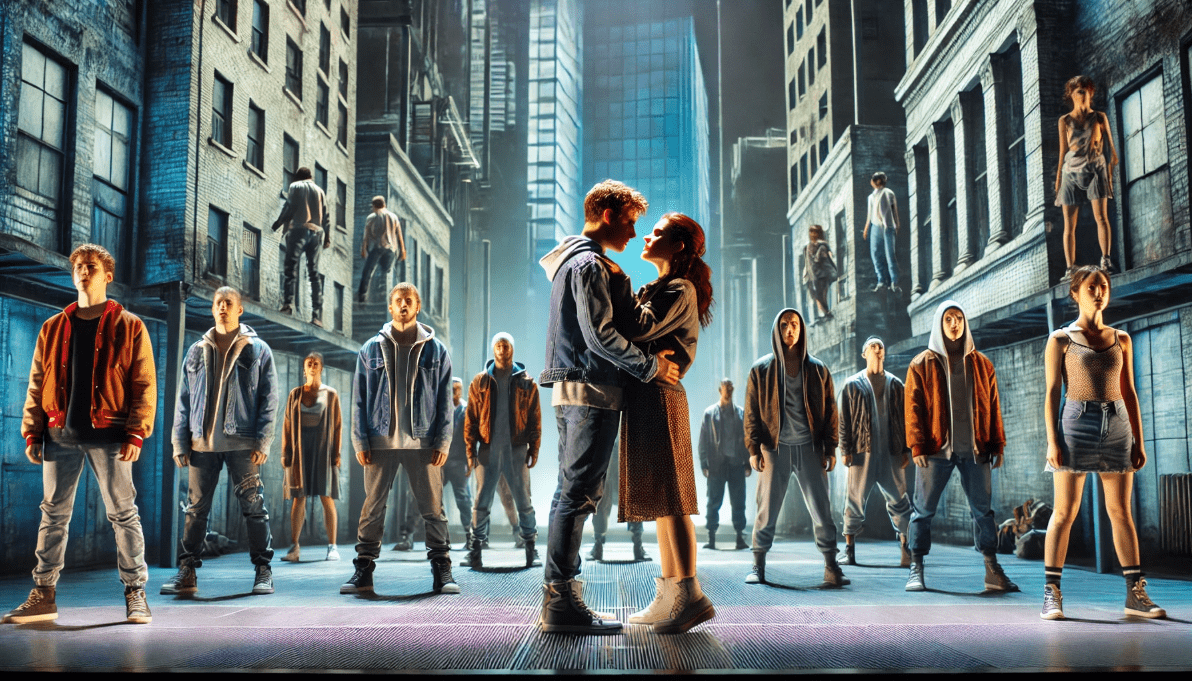
- Breaking the Fourth Wall: Shakespeare often had characters speak directly to the audience through soliloquies, creating an intimate connection between performer and viewer. This practice has been adopted by modern actors, who often engage directly with the audience to deepen their emotional connection to the material.
- Minimalist Set Design: Just as in Shakespeare’s time, modern theatre often uses minimalist set designs that allow the actors and the audience’s imagination to take center stage. This approach emphasizes the importance of storytelling and performance over elaborate backdrops or special effects.
- Ensemble Acting: Shakespeare’s ensemble acting style, where every member of the cast plays an important role, remains a hallmark of modern theatre. Today, directors often emphasize the importance of collaboration among actors to create a more immersive and dynamic performance.
4. Shakespeare’s Lasting Cultural Influence
Shakespeare’s influence extends far beyond the theatre. His work has become ingrained in popular culture, literature, and even language. Common phrases like “break the ice,” “wild-goose chase,” and “heart of gold” all originated from Shakespeare’s plays, demonstrating how his words have woven into the fabric of daily life.
In film and television, Shakespearean themes and plot structures continue to inspire. Many modern films are direct adaptations of his works, such as West Side Story (based on Romeo and Juliet) or The Lion King (inspired by Hamlet). These adaptations prove that the core of Shakespeare’s storytelling—love, betrayal, revenge—still resonates with modern audiences.
5. Why Shakespeare Still Matters Today
Shakespeare’s theatre legacy endures because it taps into the core of the human experience. His works explore fundamental emotions and situations—love, loss, ambition, betrayal—that are as relevant today as they were in the 16th century. Whether on the stage, in a classroom, or through film adaptations, Shakespeare’s work continues to challenge, inspire, and entertain.
For anyone involved in the theatre world—whether as an actor, director, or writer—Shakespeare’s legacy is a goldmine of creativity, technique, and insight. His ability to capture the complexities of human nature in a way that speaks across centuries is why his theatre continues to influence contemporary performances.
Shakespeare’s Enduring Legacy in Theatre 

The evolution of theatre during Shakespeare’s era didn’t just change how plays were written and performed—it revolutionized the entire theatrical experience. Shakespeare’s contributions to character development, language, stagecraft, and storytelling created a lasting foundation that continues to shape modern drama and performance today.
From his deep exploration of human nature to his innovative use of language and performance techniques, Shakespeare’s work transcends time. His plays remain as relevant now as they were centuries ago, offering fresh insights into the complexities of love, ambition, betrayal, and power. His influence extends beyond the stage, impacting literature, film, and even our everyday language.
Whether you’re a theatre enthusiast, an aspiring playwright, or simply someone curious about the roots of modern drama, understanding the evolution of theatre during Shakespeare’s era is essential to appreciating how far we’ve come. His legacy is a testament to the power of storytelling and its ability to connect generations, cultures, and individuals through the universal experience of drama.
Shakespeare didn’t just shape theatre—he shaped the way we understand and express the human experience, and his impact will continue to resonate in the world of performance for generations to come.
Frequently Asked Questions (FAQs)
1. What was the role of Shakespeare in the evolution of theatre?
Shakespeare played a pivotal role in transforming theatre from simple moralistic plays to complex stories with deep characters. His use of rich language, innovative structures, and exploration of human emotions set the foundation for modern drama. His works are still performed worldwide, influencing both stagecraft and storytelling techniques.
2. How did theatre change during Shakespeare's time?
Theatre during Shakespeare’s era saw a major shift with the rise of public playhouses, making performances accessible to people of all social classes. Shakespeare introduced more complex characters and plots, blending different genres, and his writing broke away from traditional religious or morality-based plays. This shift laid the groundwork for modern theatre.
3. What is the legacy of Shakespeare's theatre in modern drama?
Shakespeare’s legacy is seen in the depth of modern characters, the exploration of universal themes like love and ambition, and the use of complex language in plays. His influence extends beyond theatre into film, literature, and even everyday language. Modern playwrights and filmmakers continue to draw inspiration from his innovative techniques.
4. How did Shakespeare influence character development in theatre?
Shakespeare revolutionized character development by creating multi-dimensional characters with internal struggles, flaws, and desires. These complex characters, like Hamlet or Lady Macbeth, became models for modern theatre, where characters are often psychologically rich and relatable to audiences.
5. Why are Shakespeare's plays still performed today?
Shakespeare’s plays are still performed because their themes—love, betrayal, power, and fate—are timeless. His characters and stories resonate with audiences across generations and cultures. Moreover, his plays are versatile, offering endless opportunities for reinterpretation, adaptation, and modern relevance.
6. How did the public playhouses in Shakespeare's time impact theatre?
Public playhouses like The Globe made theatre accessible to everyone, not just the wealthy or elite. They created a dynamic environment where actors engaged directly with a diverse audience, influencing the way plays were written and performed. This shift from private to public theatre made drama more inclusive and lively.
7. What techniques did Shakespeare use to engage the audience?
Shakespeare engaged audiences through direct interaction, often breaking the fourth wall with soliloquies and addressing the crowd. His use of vivid language, dramatic pauses, and emotional depth drew the audience in, making them feel connected to the characters and the action on stage.













